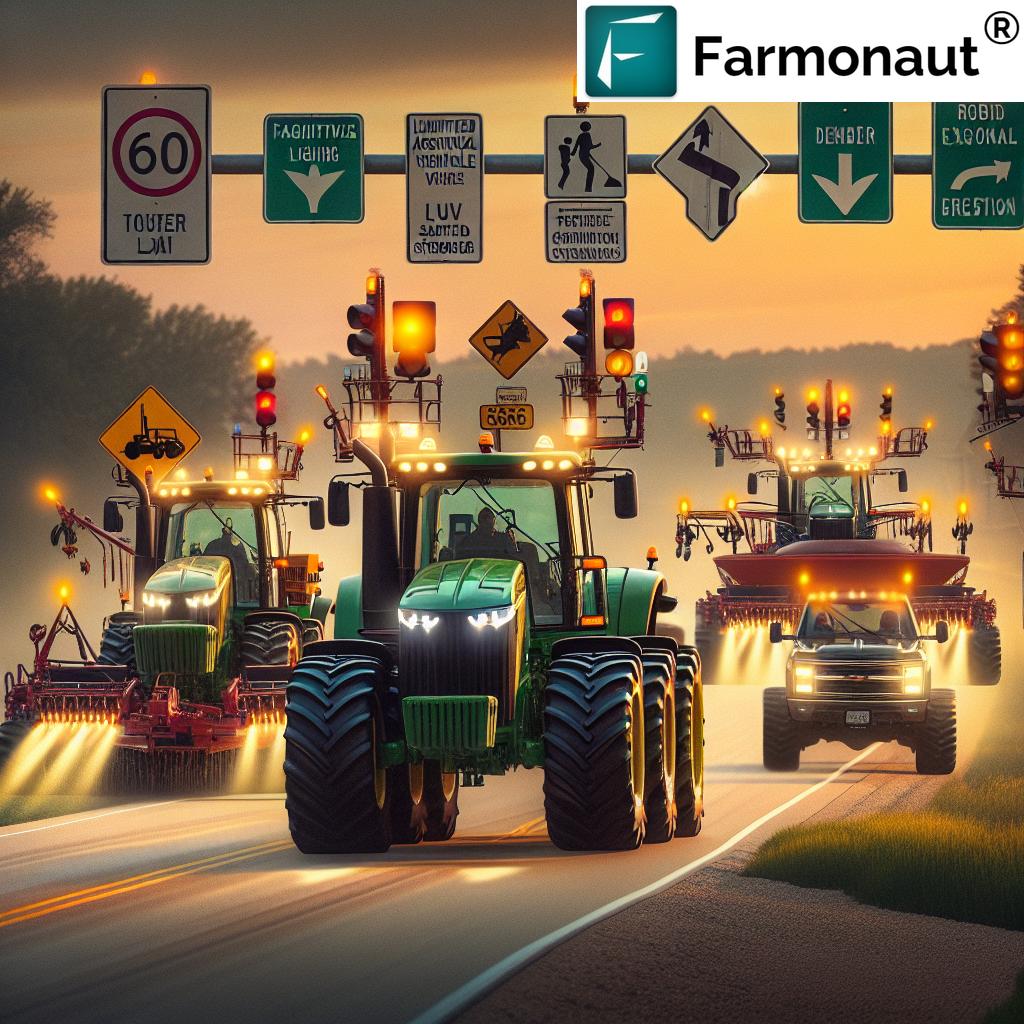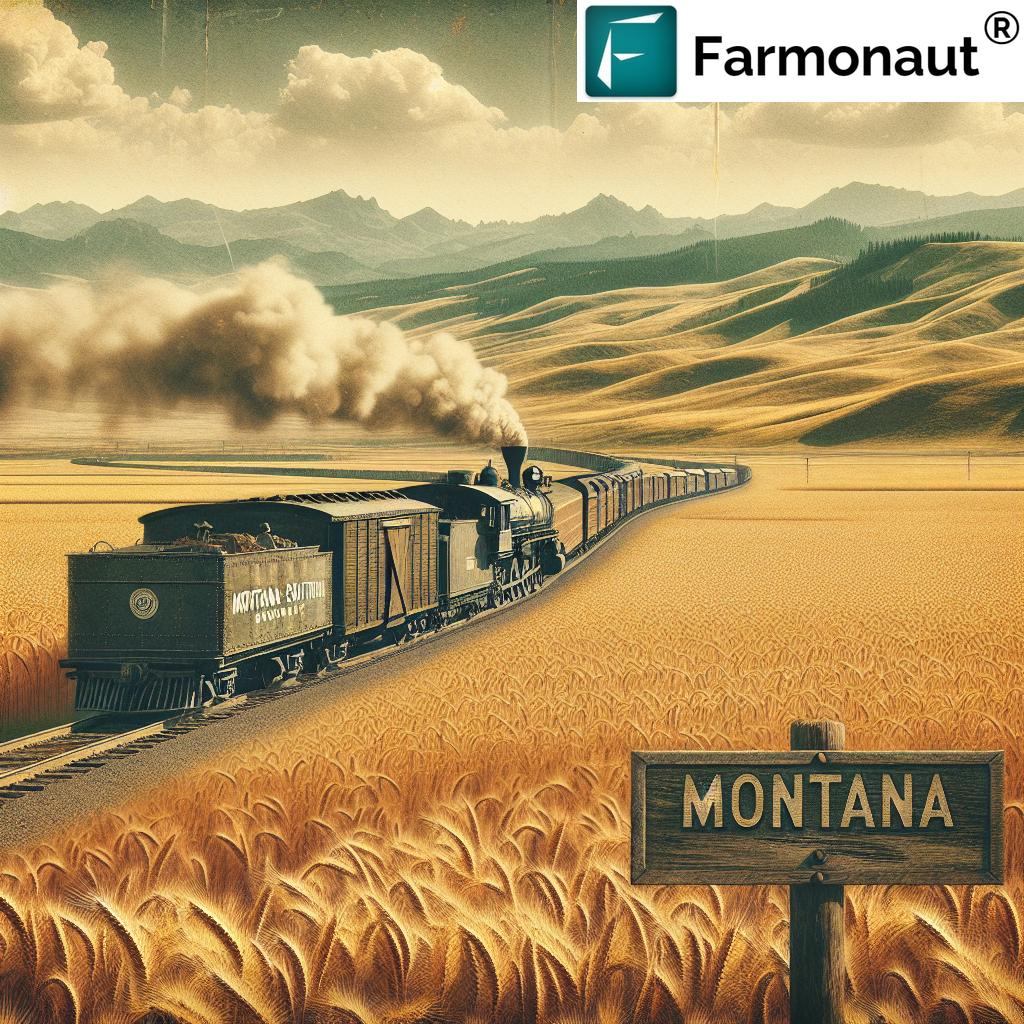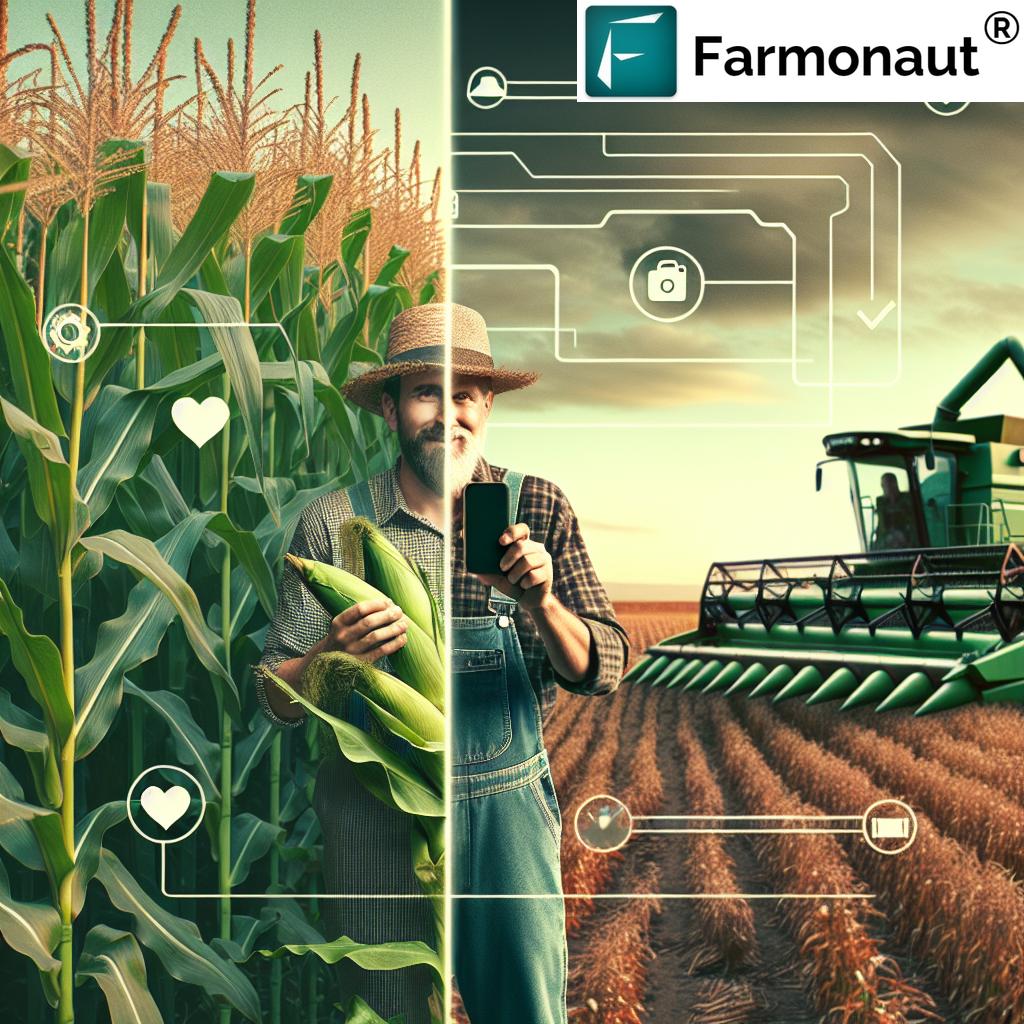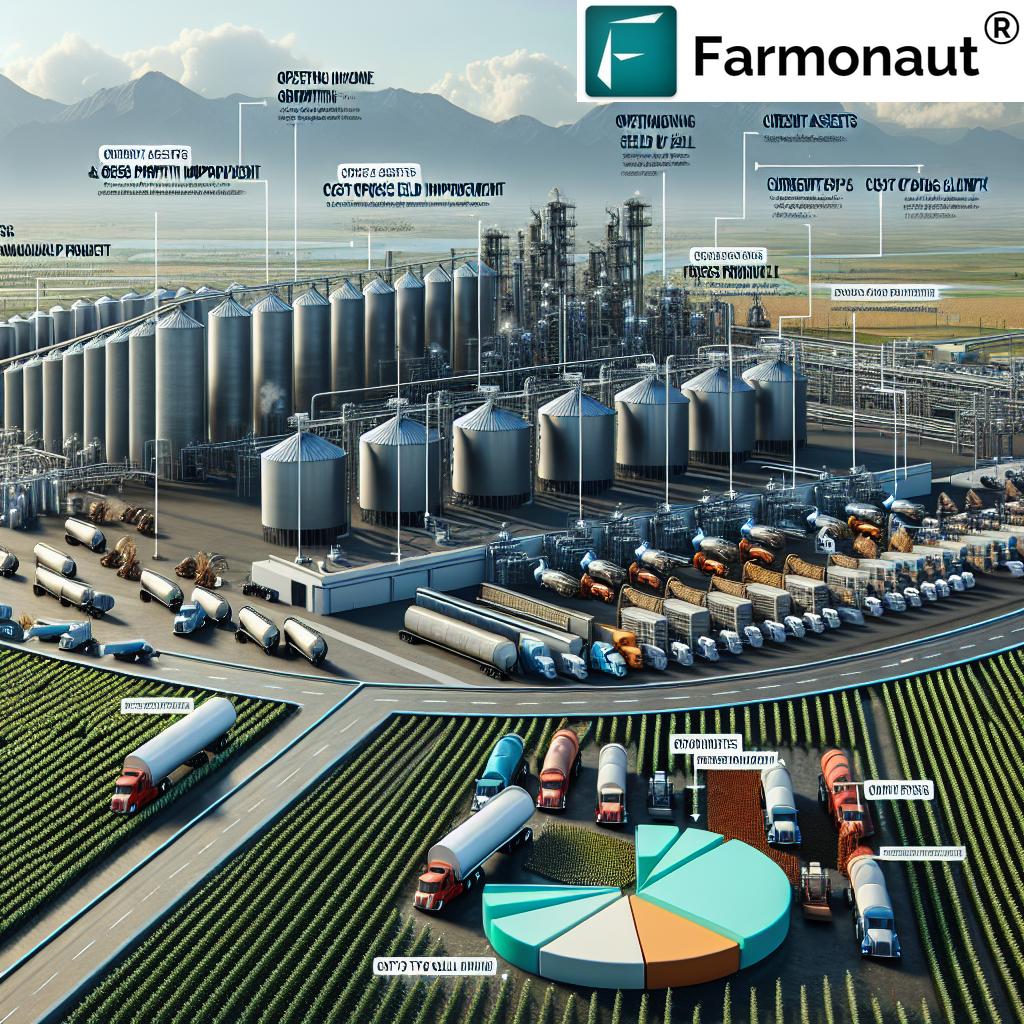Limited Use Agricultural Vehicle: 7 WI Rules – Ensuring Safety and Compliance on Wisconsin Farms
“Wisconsin law limits limited use agricultural vehicles to a maximum speed of 35 mph on public roads.”
Introduction
The agricultural landscape across the United States and particularly in Wisconsin continues to evolve, with Limited Use Agricultural Vehicles (LUAVs) playing an ever more significant role in modern farm operations. These specialized vehicles are designed to fulfill tasks such as planting, harvesting, transporting feed and fertilizer, and moving agricultural products both within the farm and sometimes on public roads. Operating these vehicles safely and legally requires comprehensive knowledge of agricultural vehicle regulations, compliance tips, farm vehicle safety standards, and the specific state requirements for farm equipment.
This blog offers a deep dive into the 7 WI Rules that every Wisconsin farmer or operator must follow when using LUAVs, ensuring proper safety, operational compliance, and maximum efficiency for farming activities. We cover everything from the definition and characteristics of LUAVs to the latest federal and state regulations, the importance of routine maintenance, and how modern technologies—including intelligent fleet management solutions like those offered by Farmonaut—can simplify and strengthen compliance.
“There are 7 key Wisconsin rules governing the operation and compliance of limited use agricultural vehicles.”
Definition and Characteristics of Limited Use Agricultural Vehicles
To navigate Wisconsin’s regulations and effectively implement maintenance of farm vehicles and agricultural equipment compliance, you must first understand what qualifies as a Limited Use Agricultural Vehicle (LUAV). Here is an overview:
- Design and Equipment: LUAVs are vehicles substantially designed or equipped, or materially altered from their original construction, for the purpose of agricultural use. This means their frameworks, attachments, and functions are specifically suited to farming activities.
- Primary Use: The primary purpose of these vehicle types is to aid in the conduct of agricultural operations—whether transporting feed for livestock, applying fertilizers and pesticides, planting, harvesting, or moving agricultural products.
- Manufacturing Standards: With safety at the forefront, LUAVs (unless manufactured before 1970) must be built according to federal motor vehicle safety standards in 49 CFR 567. This means compliance with national requirements for vehicle structure, braking, lighting, and more.
- Specialized Activities: These vehicles aid in highly specialized farming activities—from the precise distribution of feed to livestock, to assisting machinery during harvesting, or acting as spreaders, sprayers, and more.
- Exclusivity: LUAVs are intended for exclusive use in agricultural operations rather than transporting general goods or carrying passengers outside farm purposes.
By understanding this definition and the unique characteristics of LUAVs, farmers and operators can ensure their equipment falls within the intended regulatory scope and can be properly managed under Wisconsin’s specific requirements for farm vehicles.
Regulatory Framework: Federal and State Agricultural Vehicle Regulations
Understanding the regulatory environment is critical for all operators utilizing LUAVs. Both federal and Wisconsin-specific rules apply to ensure the safe and lawful operation of farm vehicles on public roads, highways, and fields.
Federal Regulations: Motor Carrier Administration and Safety Standards
- FMCSA and Exemptions: The Federal Motor Carrier Safety Administration (FMCSA) provides several key exemptions for agricultural vehicles and operators. For example, LUAVs—or similar agricultural commercial vehicles (Ag CMVs)—with a Gross Vehicle Weight Rating (GVWR) of 26,001 pounds or more can be exempt from Commercial Driver’s License (CDL) requirements and Hours of Service (HOS) rules, provided they are operated within the state of registration or within a 150-mile radius of the farm or ranch (pfb.com).
- Manufacturing – 49 CFR 567: For federally regulated safety standards, most LUAVs must follow the rules of 49 CFR 567 relating to vehicle manufacturing and equipment standards. Specifically, lighting, marking, braking, and other safety features must comply with federal requirements if the LUAV was manufactured post-1970.
- Interstate Travel: If LUAVs travel between states, operators should be aware of reciprocity agreements (where states may accept out-of-state farm vehicle registrations) and obtain necessary permits if such agreements do not exist.
State Regulations: Wisconsin’s Approach to Agricultural Vehicle Compliance
- Definition of Ag CMV in WI: Wisconsin law defines an Agricultural Commercial Motor Vehicle (Ag CMV) as “a self-propelled vehicle, substantially designed or equipped, or materially altered from original construction, for agricultural use, primarily for highway use, and used exclusively in agricultural operations.”
- Dimensions, Weight, and Operational Limits: Wisconsin allows certain operating exceptions for LUAVs, including a maximum width of 10 feet for Ag CMVs (and specific exceptions for equipment like spreaders and sprayers), and sets guidelines for safe speeds, lighting, and marking while operating on highways.
- Road Safety: LUAVs in Wisconsin must adhere to safety standards that enhance visibility (such as lighting and marking), and abide by unique, agriculture-specific rules for road usage.
For more on Wisconsin’s vehicle definitions and operational specifics, always check the latest state DMV resources.
Operational Considerations for Operating Agricultural Vehicles on Public Roads
Modern agricultural operations in Wisconsin depend on ensuring not only compliance with LUAV rules but also practical, day-to-day safety and operational standards. Here are vital considerations:
Width and Weight Limits for Farm Vehicles
- Width: Most LUAVs are capped at a maximum width of 10 feet (with exceptions for equipment such as pesticide sprayers and fertilizer spreaders can be greater under permit or specified situations).
- Weight: Operators should remain vigilant about gross vehicle weight rating (GVWR) and axle weight restrictions to prevent unsafe operation and costly road damage.
- Height and Length: In most cases, height must remain below 13 feet 6 inches unless an over-height permit is secured, and overall length restrictions may apply depending on the combination of vehicles used.
Strict adherence to these dimensions and limits reduces accident risk and ensures legal operation.
Lighting and Marking for Agricultural Vehicles
-
Since agricultural vehicles often move more slowly than other traffic and may operate in low-visibility conditions, lighting and marking for agricultural vehicles is essential for safety. Federal regulations (49 U.S. Code § 30111) specify lighting and marking requirements, including:
- Reflective tape or markers to outline width/edges
- Flashing amber lights, especially on outermost corners
- Slow-Moving Vehicle emblems (an orange triangle) mounted where clearly visible
Proper marking increases vehicle visibility and decreases liability risk for farm operators.
CDL Exemptions for Agricultural Vehicles
-
Wisconsin (and federal law) recognize CDL exemptions for agricultural vehicles under specific conditions: Operators do not need a commercial driver’s license if driving an Ag CMV:
- Within the state of Wisconsin
- Within 150 air miles from the farm/ranch
- Solely in connection with agricultural operations (planting, harvesting, feed/produce delivery)
- Note: Leaving Wisconsin or carrying non-farm products nullifies these exemptions and triggers standard CDL/HOS requirements.
Agricultural Equipment Compliance: Registrations and Reciprocity
- Some LUAVs may require special vehicle registrations for road use in Wisconsin or when entering another state. While Wisconsin has agricultural exceptions, always check neighboring state policies and whether they honor Wisconsin’s registration forms.
- For interstate travel, acquire any required permits or ensure the presence of a valid reciprocity agreement.
Examples of Common LUAVs and Their Operations
- Planting Equipment: Specialized tractors and planters constructed or adapted specifically for sowing seeds; require wide clearance, accurate marking, and cannot exceed certain road widths.
- Harvesters: Combine harvesters and silage equipment equipped with augers or attached carts, tailored for grain, corn, or forage collection and transport.
- Spreaders & Sprayers: Fertilizer or pesticide dispersal vehicles (such as high-clearance sprayers) that may need special width/weight accommodations for safe road transit.
To avoid non-compliance fines, always verify dimensions, lighting, and documentation before moving LUAVs on public roads.
The 7 Key Wisconsin Rules for Limited Use Agricultural Vehicles
Let’s break down the seven essential Wisconsin rules every operator must follow to remain compliant with state requirements for farm equipment. Each rule targets specific facets of LUAV safety, operation, and legal standing:
- Definition and Purpose: Your vehicle must be substantially designed or equipped for agricultural use, with its primary intended use being the conduct of farm operations.
- Vehicle Registration: All LUAVs intended for use on public roads in WI should have appropriate agricultural vehicle registrations or display proof of ownership and intended ag use.
- Speed Limits: LUAVs are limited to a maximum speed of 35 mph on Wisconsin public roads. Exceeding this can result in fines and invalidate liability protections.
- Dimensions: Width and weight limits for farm vehicles are established. Most LUAVs cannot exceed 10 feet in width and must comply with both gross and per-axle weight restrictions.
- Lighting and Marking: Special standards require that all LUAVs operating on highways have lighting and marking (amber flashers, reflective tape, slow-moving vehicle emblems) visible from all angles, especially at dawn, dusk, or poor weather conditions.
- CDL and HOS Exemptions: Operators are exempt from CDL and hours-of-service rules only for vehicles specifically used in farming, kept within Wisconsin or 150 air miles of the farm/ranch, and not used for commercial cargo outside agriculture.
- Maintenance and Safety: Routine maintenance of farm vehicles is required to ensure brakes, tires, and lighting work as intended. Defective or unsafe vehicles are prohibited from public road use.
Read on for a practical summary and cost-compliance table for these CUAV rules.
Regulation Overview Table: Summary and Compliance Costs
| Rule Number | Regulation Summary | Estimated Compliance Cost (USD) | Penalty for Non-Compliance (USD) | Safety Recommendation |
|---|---|---|---|---|
| 1 | LUAVs must be designed/equipped exclusively for agricultural operations | $0–$2,500 (modifications) | $200–$500 citation & possible impound | Maintain documentation for modifications/alterations |
| 2 | Proper registration or proof of ownership and intended ag use | $50–$200 annually (registration) | $250–$1,000 fine | Keep registration documents onboard |
| 3 | 35 mph max speed on public roads | $0 (driver awareness) | $250–$500 ticket, possible increased insurance | Install speed limiter or speedometer upgrade |
| 4 | Max width 10 ft (exceptions possible); comply with weight rules | $0–$800 (permits; reconfiguration) | $200–$1,000 fine and traffic citations | Pre-trip width/weight checks each time |
| 5 | Lighting and marking as per 49 CFR 567 | $100–$600 (lighting/markings upgrade) | $270–$800 ticket; liability in accident | Inspect all lights and emblems before each trip |
| 6 | CDL/HOS exemption for ag-only operation, within WI/150 mi. | $0 (for most operators) | $500–$2,500, CDL suspension | Always verify trip eligibility and purpose |
| 7 | Routine maintenance and inspections to ensure functional safety equipment | $250–$1,000/yr (routine maintenance) | $500–$1,500, out-of-service order | Create and maintain a pre-trip inspection checklist |
Safety and Compliance: Maintenance of Farm Vehicles & More
Ensuring the safe and compliant operation of LUAVs on Wisconsin roads and fields means addressing these components:
Routine Maintenance: Preventative Safety and Compliance
- Performing scheduled maintenance of farm vehicles minimizes breakdowns, extends equipment life, and ensures compliance with farm vehicle safety standards and manufacturer’s requirements.
-
Key checks include:
- Brake and tire inspections
- Verification of lighting and marking equipment
- Steering and control system assessments
- Engine, fluid, and battery checks
- Document all repairs and maintenance for legal protection and smoother regulatory inspections.
Operator Training and Recordkeeping
- All operators of LUAVs should demonstrate an understanding of agricultural vehicle regulations and safe operation protocols, even if a CDL is not legally required.
- Maintain training logs and certifications for all personnel operating any LUAV or Ag CMV.
Pre-Trip Inspections: The First Line of Defense
-
Before driving on public roads, operators should complete a pre-trip checklist:
- Inspect all lighting and marking for agricultural vehicles
- Confirm width/weight for expected route
- Test brakes and steering
- Fasten or secure all loads and attachments
- Carry necessary documents (license, vehicle registration, insurance)
- This is particularly vital for interstate or after-dark travel when agricultural equipment operators face more scrutiny.
How Farmonaut Supports Agricultural Equipment Compliance
With growing scrutiny and operational complexity, leveraging modern agri-technology ensures regulations compliance and operational efficiency. At Farmonaut, our mission is to make precision agriculture affordable, accessible, and easy to manage worldwide through smart, data-driven solutions. While Farmonaut is not a regulatory body or machinery manufacturer, our advanced technology offers value to users of limited use agricultural vehicles by supporting:
- Fleet and Resource Management: Fleet management tools help you track and schedule the location, usage, maintenance, and compliance of all your agricultural vehicles and equipment. This minimizes downtime, reduces compliance oversights, and supports safe operation on highways and public roads.
- Real-Time Analytics: By analyzing operational data—such as movement, stoppages, and working hours—Farmonaut’s solutions let you assign vehicles efficiently and verify if width, weight, or timing rules are met during each trip.
- Maintenance Tracking: Automated reminders and maintenance logs keep your LUAVs in peak condition and ensure you meet all farm vehicle safety standards.
- Crop Health Monitoring and Advisory: Our satellite-based monitoring and personalized advisory systems help operators optimize field operations, schedule LUAV use effectively (such as applying fertilizers or harvesting at the right time), and support sustainability goals.
- Traceability and Compliance Documentation: Utilizing blockchain-based traceability, Farmonaut helps you document vehicle and machinery use, improving transparency and supporting audits.
- API Integration: Developers or agri-businesses can bring Farmonaut’s satellite and weather analytics to their own compliance systems via API. See our comprehensive developer documentation here.
- Carbon Footprinting: Track carbon emissions from fleet and equipment use—supporting sustainability, regulatory reporting requirements, and resource optimization.
- Insurance and Financing: Our platform enables faster, more reliable crop loan and insurance approvals through remote verification—useful if you need to finance vehicle upgrades for compliance.
- Large-Scale Farm Management: With specialized tools for large-scale management and admin oversight, operators with multiple LUAVs or large equipment fleets can consolidate compliance management in one place.
Whether you’re a single farm owner, co-op manager, or government administrator, Farmonaut’s ecosystem addresses modern challenges in maintenance, compliance, safety, and sustainability of agricultural vehicles—all accessible on web, Android, and iOS platforms.
Farmonaut Subscription Plans – Get Started
Frequently Asked Questions: Limited Use Agricultural Vehicles in Wisconsin
1. What is a Limited Use Agricultural Vehicle (LUAV)?
An LUAV is any vehicle substantially designed, manufactured, or modified for exclusive use in agricultural operations—such as planting, harvesting, feeding livestock, or transporting farm products. These vehicles comply with specific federal and state regulations for design, usage, safety, and road operation.
2. What are the main Wisconsin rules for LUAVs?
The 7 key Wisconsin rules include requirements for vehicle design/use, registration, speed limits, dimensions, lighting/marking, CDL/HOS exemptions, and maintenance. (See our detailed table and rule list above.)
3. Do I need a CDL to drive an LUAV in Wisconsin?
No, operators are generally exempt from CDL and HOS requirements when driving LUAVs exclusively for agricultural purposes, within Wisconsin state lines, or 150 miles from the home farm/ranch. Exemptions do not apply if the vehicle moves non-ag products or travels outside these boundaries.
4. What are the lighting and marking requirements?
All LUAVs on public roads must have:
- Flashing amber lights
- Reflectors/tape outlining width
- Slow-moving vehicle emblem (orange triangle)
These measures enhance visibility for other drivers, reducing accident risk.
5. What is the maximum speed allowed for LUAVs in Wisconsin?
LUAVs are limited to a maximum speed of 35 mph on public roads in Wisconsin.
6. How often should I maintain my LUAV?
Maintenance should be performed according to the manufacturer’s schedule, or at minimum, before each major use or road journey. Keeping a log with dates and types of maintenance is essential for compliance and safety.
7. Can I use my LUAV in another state?
Possibly, but you must check reciprocity agreements and registration requirements of the destination state. Some states accept Wisconsin’s ag registrations; others demand special permits.
Conclusion: Achieving Compliance & Safe Operations
As Wisconsin’s agricultural sector grows in scale and sophistication, ensuring compliance with all LUAV regulations is vital for operator safety, legal protection, and efficient operations. By thoroughly understanding the 7 key Wisconsin rules, proactively maintaining equipment, and applying the latest digital tools and data-driven insights, farms can transform compliance from a burden into an asset.
With Farmonaut, agricultural professionals of all scales have access to advanced fleet management, compliance tracking, crop health monitoring, and sustainability management—integrating seamlessly into their day-to-day workflows via web, mobile, or API. Whether you manage a single tractor or a fleet of commercial LUAVs, staying ahead of state and federal requirements is easier than ever, building a safer, more productive, and compliant farming future for Wisconsin and beyond.
For the full suite of Farmonaut’s cloud-powered, satellite-based, and AI-driven tools, explore our apps or integrate our platform via API. Discover how precision agriculture and compliance go hand in hand, and start optimizing your agricultural vehicle operations today!

















